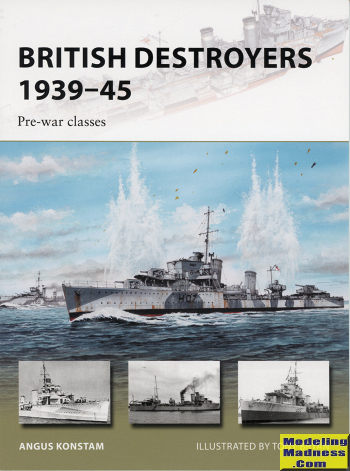 Then
end of WWI saw the UK with still the largest navy in the world. Though the US
had made advancements in both ship design and numbers, the UK had so many ships
that a good many had to be either mothballed, scrapped, or put on reduced
operations.
Then
end of WWI saw the UK with still the largest navy in the world. Though the US
had made advancements in both ship design and numbers, the UK had so many ships
that a good many had to be either mothballed, scrapped, or put on reduced
operations.
Ships, however, do not last forever. There is a finite amount of time
that a warship in particular is useful. One can make improvements and frequent
overhauls can be used to extend the service life of a ship. This is especially
true in times of austerity, which is exactly what the British and the rest of
the world were facing following WWI and especially during the times of the Great
Depression. With the start of WWII, there was an immediate need for warships.
This was particularly true of convoy escorts. The Germans wasted no time
starting up submarine warfare, leaving the Royal Navy scrambling for warships.
Fortunately, they did have a considerable number of destroyers. While
many of these did not have the speed for keeping up with the fleet, they were
perfect for slow convoys. There were also a number which did not have the range
for convoy escort. This latter situation was resolved to some extent by removing
boilers and replacing the space with fuel tanks.
The air threat was a much greater concern during WWII and so part of the
moderization and conversion of these ships was to have modern A-A guns
installed, while the torpedo tubes were removed as well as some of the turrets
and anti-submarine weapons (depth charges and throwers) placed in their stead.
Those ships that lasted long enough also got both surface and air search radars,
which were a real boon to locating submarines. ASDIC (Sonar) was also a
mandatory fit.
With all this additional equipment, additional crew were needed, but
there was no additional space so life aboard these ships was cramped at best and
miserable at worst. Especially on Arctic convoys.
This book covers the myriad of classes of destroyers operated by the
Royal Navy during the war and in particular, concentrates on those classes that
entered service prior to the start of the war. Some were WWI relics that were
scheduled for decommissioning, but kept out of expediency. Others were 'treaty
ships' while yet others were fairly modern. All are covered with the author
going over the salient features of each class as well as any upgrades and
modifications. Each class includes a full listing of ships as well as its
eventual fate. Not surprisingly, like US destroyers early in the war, there were
quite a few that were sunk in various actions. Chock full of great photos and
some interesting art work, this is a must have for those wanting an overview of
this rather complex subject. Well worth picking up and reading, I can quite
easily recommend it for you.
April 2017
Copyright ModelingMadness.com. All rights reserved.
For more on the complete line of Osprey books, visit
http://www.ospreypublishing.com
If you would like your product reviewed fairly and
fairly quickly, please
contact
the editor or see other details in the
Note to
Contributors.
 Then
end of WWI saw the UK with still the largest navy in the world. Though the US
had made advancements in both ship design and numbers, the UK had so many ships
that a good many had to be either mothballed, scrapped, or put on reduced
operations.
Then
end of WWI saw the UK with still the largest navy in the world. Though the US
had made advancements in both ship design and numbers, the UK had so many ships
that a good many had to be either mothballed, scrapped, or put on reduced
operations.